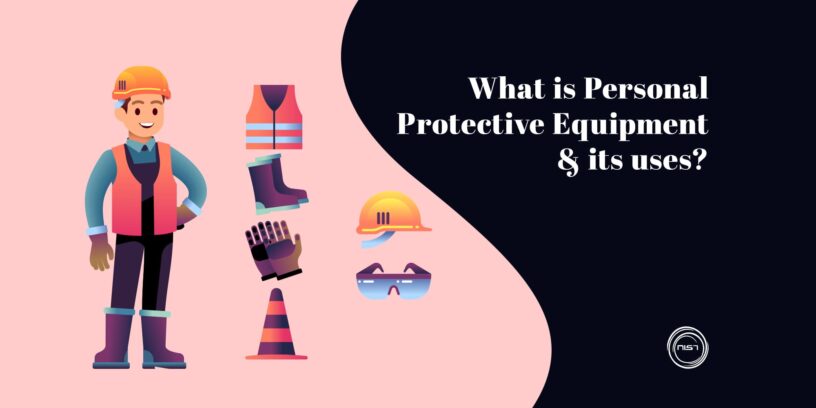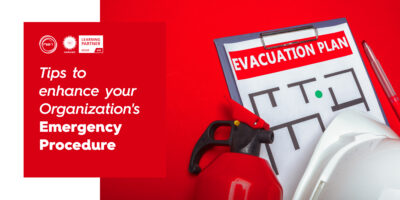This article will answer your question. PPE includes any material that provides protection against workplace hazards or is worn for the purpose of enhancing personal safety. Personal protective equipment protects the user from the potential of being injured by an accident in the workplace and is required in a number of jobs and industries. This is usually done by providing protection to the face, hands, eyes, chest, and legs.
Personal Protective Equipment (PPE) is used in a wide range of environments and situations including construction, power generation, oil and gas production, mining, hazardous waste treatment and transportation, defense, healthcare, and firefighting.
PPE is not just clothing. It is the application of a wide variety of materials, equipment, and processes used to protect people from workplace hazards. All industries require the use of some type of Personal Protective Equipment (PPE). All PPE categories are intended to protect against workplace hazards.
Personal Protective Equipment includes protective head gear, eye protection, gloves, hard hats, and a variety of other garments and materials that provide additional protection against workplace hazards. Protective clothing is intended to provide initial protection against workplace hazards in the form of clothing such as coveralls, protective boots, shoes, gloves, and the like. Types of PPE are often combined into single items. For example, a Hard Hat and a Safety Boot may be worn together to provide more protection.
Types of Personal Protective Equipment:
Personal Protective Equipment (PPE) is intended to be the first line of defense against potentially hazardous conditions and is used in many settings including firefighting, structural work, hazardous material control, emergency medical treatment, military combat, and high-risk sports activities.
Examples of Health Risks and Protective Measures:
Industries such as the pharmaceutical, food and beverage, chemical processing, and waste treatment produce materials that are hazardous to workers. When workers are exposed to these substances the results can be fatal and there is no way to tell whether a worker will be harmed. For this reason, all industries require that they provide PPE to their employees.
Many health hazards present in the workplace cannot be detected using the senses alone. An individual may only become aware of health hazards after they have already experienced symptoms or become ill as a result of exposure. The most common example is acute health effects, which can occur as a result of toxic substances that irritate the skin or eyes. Other acute effects include heat injury, chemical inhalation, and burns from electrical currents. Some individuals may suffer from chronic health effects due to long-term exposure to toxic substances, which may lead to various diseases. Examples of chronic health effects include cancer, respiratory illnesses, and cardiovascular disease.
Here is the list of personal protective equipment and its uses: This includes safety shoes, safety gloves, personal protective gear, etc.
Gloves and Safety Shoes:
Gloves can be used to prevent injury from hot materials or from sharp objects. A variety of gloves is available from a number of vendors and should be appropriate to the particular task or industry in which the gloves will be used. Safety Shoes are specifically designed to protect against falls.
Protective Headgear:
Protective headgear is a required element used in industries where a worker may be exposed to chemical, heat, or noise hazards.
Dust Resistant Clothes:
In some industries, such as construction, workers are regularly exposed to dust or other airborne particles. Dust Resistant Clothing offers some protection against this type of exposure.
Earplugs and Safety Glasses:
Safety glasses can be used to prevent injury from flying objects, particles, liquids, and sparks. Protective eyewear can also prevent injury from the impact of falling objects. Most safety glasses are made of thin, clear materials that easily break, are easily broken, and can be inexpensive.
Eye Protection:
Eyewear is used to prevent injury from flying objects, particles, liquids, and sparks. Safety glasses can be used to prevent injury from the impact of falling objects. The most common form of eye protection is Safety Glasses. Safety Glasses are designed to be lightweight, break easily, and are inexpensive.
Protective Clothing:
The term protective clothing, and its synonyms, such as coveralls and protective suits, are used to describe different forms of PPE. In many industries, workers are exposed to a range of hazards including extreme heat, toxic fumes, radiation, chemicals, bacteria, and sharp objects. In order to protect themselves from the hazards, workers are required to wear protective clothing. Protective clothing can include clothing worn by workers in chemical processing and waste treatment plants etc
Respiratory Protective Equipment:
Respiratory problems are among the leading causes of worker injury and fatality. Respiratory protective devices include self-contained breathing apparatus, masks, and respiratory protective shields. Workers may be exposed to hazardous chemicals, fumes, heat, noise, or cold and may require the use of Respiratory Protective Equipment. Respiratory Protective Equipment is used to protect against respiratory hazards.
PPE and Occupational Health:
All industries face some form of health and safety risks. Some risks can be handled or controlled by the employer, others require the use of personal protective equipment to prevent or lessen the severity of the health effects of exposure. Personal Protective Equipment is usually essential, especially when working with hazardous substances as mentioned. However, the use of Personal Protective Equipment is a discretionary function, therefore, some industries provide additional training to ensure that the best possible level of protection is available to their workers. The level of training and safety standards vary across all industries.
The employer is required to provide a worker with a safe and healthful place to work by using personal protective equipment in the course of the worker’s employment. The worker is also required to wear personal protective equipment, including safety shoes. Do not question why you should wear PPE every time you are involved in work, as you must if you want to stay safe. PPE is also useful when you want to save yourself without making any effort. PPE is also useful when you want to save yourself without making any effort.
Most firms in the industry have recognized the need of wearing PPE to reduce workplace accidents and injuries and to stay safe!













Leave a Reply